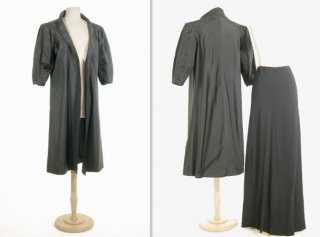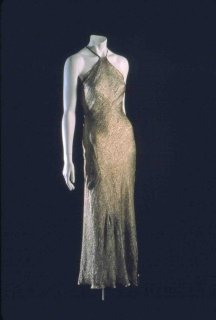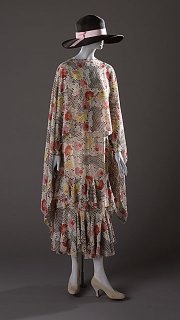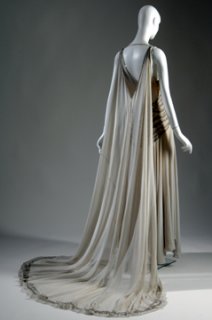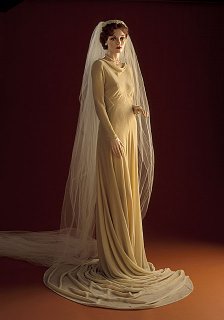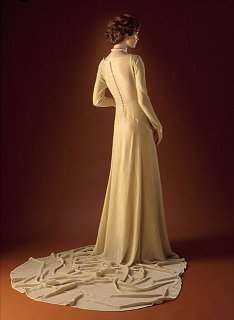SomethingElse
Press escape to continue.
- Joined
- Mar 22, 2007
- Messages
- 5,442
- Reaction score
- 0
DosViolines already posted the gown on the right, but here's another one from the Met. 

metmuseum.org

1938 Evening dress, one in silver lamé and ivory silk net and the other in pale pink and silver lamé and pale pink silk net.
Right: "I'm not a beautiful woman. I'm nothing to look at, so the only thing I can do is dress better than anyone else."—Duchess of Windsor
The Duchess of Windsor lent two dresses to the exhibition Paris Openings (1940), including this ensemble by Madeleine Vionnet. Elegant, romantic, and feminine, it seems uncharacteristic of the duchess' sober and somewhat severe fashion aesthetic. It also seems more revealing than her usual modest, discreet style. But as Danielle Porthault of Yves Saint Laurent commented, "Her Royal Highness's style was sobriety by day and fantasy and originality at night."
Left: "Mrs. Harrison Williams was a chef d'oeuvre, breathing a rarefied air of mystery, like some undine or goddess from another world who yet chooses to dress in the height of fashionable conventionality."—Cecil Beaton
In December 1933, Chanel, Lanvin, Lucien Lelong, Vionnet, Balenciaga, Edward Molyneux, and Mainbocher named Mrs. Harrison Williams the "Best Dressed-Woman in the World." Like Lady Mendl and the Duchess of Windsor, she possessed an inconspicuous elegance, which she achieved by choosing the clean and subdued lines of Vionnet and Balenciaga. Vogue observed, "She never orders the 'successes' in a collection, but instead, the costume which is noticeable only on second glance."
Mrs. Harrison Williams' style and beauty have been immortalized in art, music, and literature. In "Ridin' High," Cole Porter sang: "What do I care if Mrs. Harrison Williams is the best dressed woman in town?" In Truman Capote's Answered Prayers (1987), she was the model for the character Kate McCloud.

metmuseum.org

